#arimane
Explore tagged Tumblr posts
Text






sneak peek at a star bestiary
#doodlie!#worldless#worldless ariman#worldless moon#worldless butterfly#from the lynx herself#april 17th#the polarity swaps are fanmade designs#also for the guys not in the know#“moth” is just what i call butterfly#feels more like a moth to me
19 notes
·
View notes
Text
"Separated"
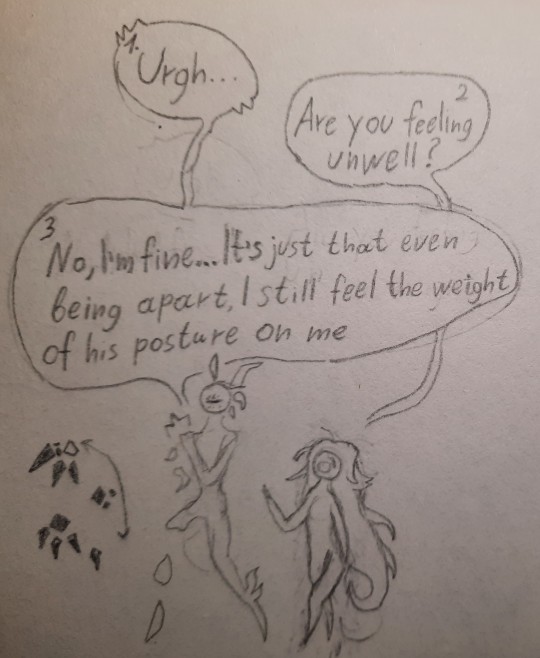
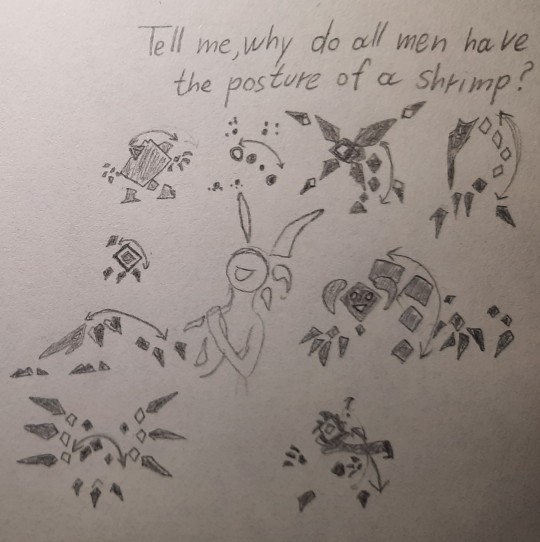
(Should I put hastag for everyone...)
#worldless#worldless edda#worldless aven#worldless duality#worldless dark paladin#worldless demon#worldless ariman#worldless assassin#worldless acid#worldless phoenix#worldless tomberi#worldless roots
27 notes
·
View notes
Note
Okay, I will probably get some lesson about how is not possible, but how about we see your idea of an Edda x Aven fankid? Will they have both of their parents powers? Will its color be a mix of their parents? Or will it be green since the start? Bonus if we see them in a family activity! (maybe even visiting grandpapa Summum!)
Day 23 // "The Child"
I am honestly not very creative when it comes to things like this, so I went with the simplest idea that came to mind at the moment...
Yeahh I don't think starfolks can reproduce like that but I do love and adore the idea of a wholesome little family dynamic🥹🥹
I also had another idea, that the duo just somehow formed a found family dynamic with this little sentient fusion star, instead of Seth being Edda and Aven's biological child. It's more possible, me thinks.
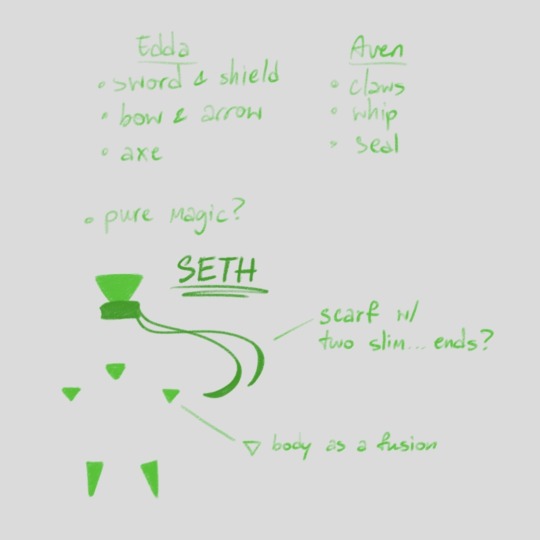


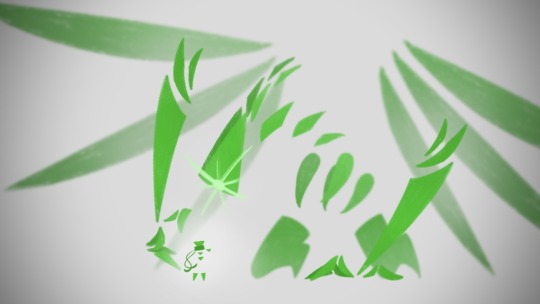
#daily worldless doodles ✦ .⁺#sonar ✦ .⁺#worldless#worldless aven#worldless edda#worldless summum#worldless ariman#poor ariman facing the wrath of a god(?) yet again#huh... I might make Seth into my OC?#my ocs: seth
27 notes
·
View notes
Text
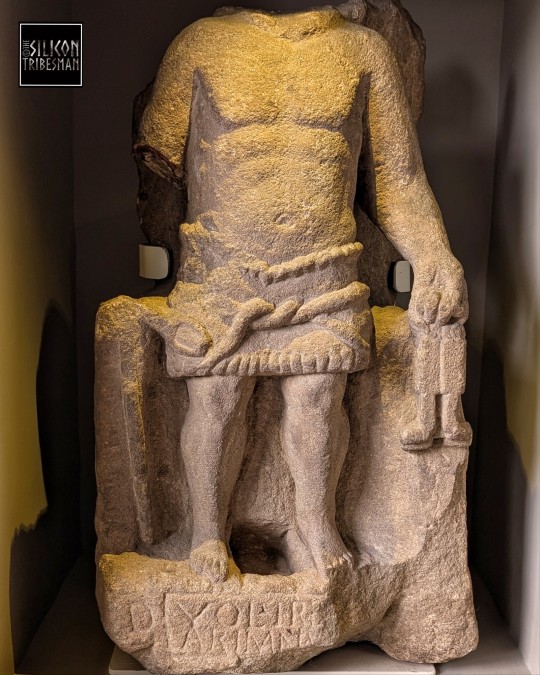
Roman Sculpture of Arimanes, The Yorkshire Museum, York
Arimanes was the devil who fought Mithras. He is shown with a lion's head, wings and a snake around his middle. He holds a staff of power and the keys to his kingdom. Volusius Irenaeus commissioned this sculpture after Arimanes helped him to successfully complete some unknown venture.
#romans#roman#statue#arimanes#Roman belief#Roman religion#Roman city#roman empire#stonework#deity#belief#archaeology#ancient cultures#ancient living#ancient beliefs#York#Yorkshire#stone carving
44 notes
·
View notes
Text
Gonna grind to be Number 1 Ariman enjoyer /j /j
Anywy little Steve

14 notes
·
View notes
Text
[Video ID: A beta video of Worldless. Edda fights an ariman, using her sword and bow attacks. Suddenly, at the end of the video, the ariman gets a clown wig and nose for some reason. /End ID]
Source: NoName
@nonamestudiosbcn did... did you put a Clown wig and nose on that ariman? Don't bully him! /silly
#OCTAfan says stuff#Worldless game#Worldless Edda#Worldless Ariman#Video#Ask to tag#tw flashing lights
11 notes
·
View notes
Text
Il Leopardi che mi piace, radicale nel suo pessimismo. ❤
Inno ad Arimane
Re delle cose, autor del mondo, arcana
Malvagità, sommo potere e somma
Intelligenza, eterno
Dator de’ mali e reggitor del moto,
io non so se questo ti faccia felice, ma mira e godi, contemplando eterno…
… Natura è come
un bambino che disfa subito il fatto.
Vecchiezza.
Noia o passioni piene di dolore e disperazione: amore.
Te con diversi nomi il volgo appella Fato, Natura e Dio.
Ma tu sei Arimane.
Taccio le tempeste, le pesti, tuoi doni, che altro non sai donare.
Tu dai gli ardori e i ghiacci e il mondo delira cercando nuovi ordini e leggi e spera perfezione.
Ma l’opra tua rimane immutabile, perché natura dell’uomo sempre regneranno l’ardimento e l’inganno, e la sincerità e la modestia resteranno indietro, e la fortuna sarà nemica al valore, e il merito non sarà buono a farsi largo, e il giusto e il debole sarà oppresso.
Vivi, Arimane, e trionfi, e sempre trionferai.
Invidia dagli antichi attribuita agli dèi verso gli uomini.
Perché, dio del male, hai tu posto nella vita qualche apparenza di piacere? L’amore? Per travagliarci col desiderio, col confronto degli altri e del tempo nostro passato?
Io non so se tu ami le lodi o le bestemmie. Tua lode sarà il pianto, testimone del nostro patire. Pianto da me per certo tu non avrai: ben mille volte dal mio labbro il tuo nome maledetto sarà.
Ma io non mi rassegnerò.
Se mai grazia fu chiesta ad Arimane concedimi ch’io non passi il settimo lustro.
Io sono stato, vivendo, il tuo maggior predicatore, l’apostolo della tua religione. Ricompensami. Non ti chiedo nessuno di quelli che il mondo chiama beni: ti chiedo quello che è creduto il massimo de’ mali, la morte (non ti chiedo ricchezze, non amore, sola causa degna di vivere). Non posso, non posso più della vita.
Giacomo Leopardi
(versione recitata da Carmelo Bene)
Fonte: Exagon
57 notes
·
View notes
Text
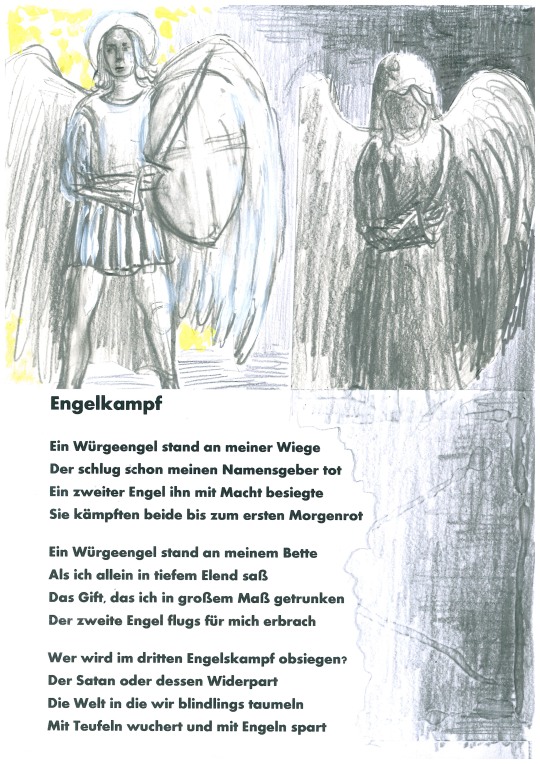
#Engelkampf#Ariman#Luzifer#St. Michael#meinungsfreiheit#doppelte moral#zensur#diktatur#Würgeengel#Endzeit#Satan#gutmenschen
0 notes
Text
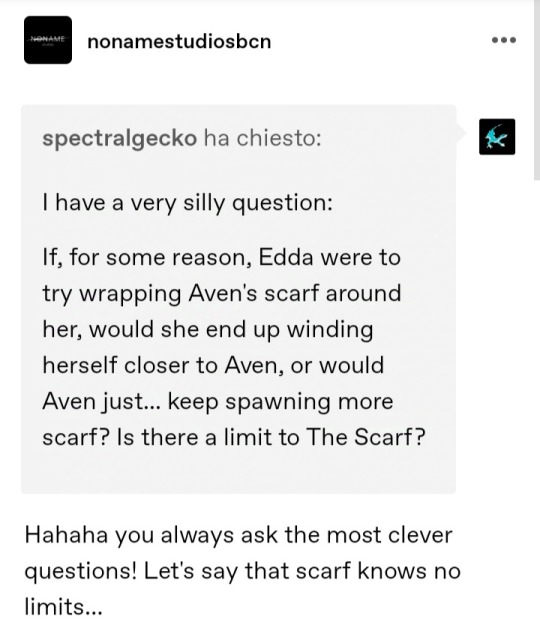
Mh...........
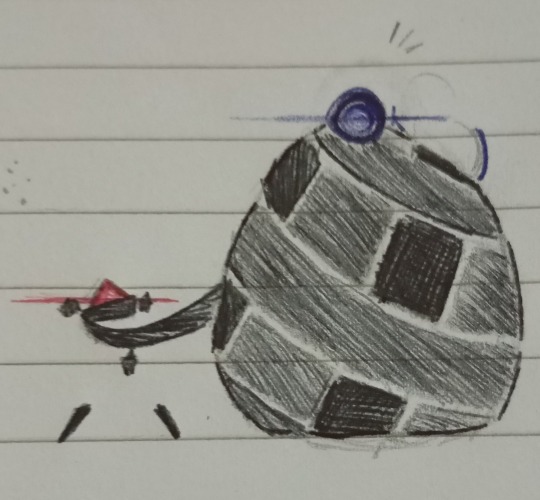
Edda is comforble
Also they kept the Ariman and named him Gerald

27 notes
·
View notes
Text

local adamantoise adopts three tiny ariman and one undersized ariman, more at 11
loosely based on this post
#doodlie!#worldless#adamantoise#adamantoise worldless#ariman#ariman worldless#from the lynx herself#december 10th#gris the grayling is probably having a migraine right now observing from the void
21 notes
·
View notes
Text
Il risvolto positivo.
La miniserie su Leopardi mi è piaciuta molto.
Confermo ciò che già pensavo. Giacomo Leopardi ha avuto una mente e un'anima gigantesche inserite in un contesto mediamente composto da persone ottuse, a partire dai suoi genitori. Cresciuto rinchiuso in una casa, la sua mente e la sua anima già viaggiavano oltre.
La sua anima inquieta e il suo essere un tipo fragile e solitario non hanno fatto altro che concorrere alla formazione del suo assoluto genio poetico e filosofico. Giacomo nei sui componimenti non metteva tuttavia in risalto solo tristezza e malinconia, ma anche bellezza e amore.
Approfondirò sicuramente in misura maggiore questo grande genio. Merita assolutamente.
#giacomo leopardi merita un sacco#non è una vergogna essere pessimisti#nell'inno ad arimane dice che anche l'amore fa parte del male ed è ordinato al male
14 notes
·
View notes
Text
If Aven's scarf can stretch infinitely, would it work with Edda's hair?
Behold and kneel before her absolute greatness (and fluffiness)

17 notes
·
View notes
Note
Request: The duo finding a place that is the equivalent of the Habana/Cancun/Florida whatever, relaxing at the beach! Bonus if starfolk from both sides (maybe even from the greens) are there too and are like "Yeah, war can wait, this Copacabana beach fun can't!"
Day 14 // "Beach of Peace"
I got really lazy and couldn't fit many starfolks in this one but I hope this is alright!

#daily worldless doodles ✦ .⁺#sonar ✦ .⁺#worldless#worldless aven#worldless edda#worldless duality#worldless adaptation#worldless yin-yang#worldless summum#worldless ariman#worldless moon#worldless fairy#worldless tomberi#waaaaayy too many char tags😭😭
27 notes
·
View notes
Note
RP session w/ @ask-hellenzkrodile
Ariman takes a small group of his soldiers with him to explore new universes in order to collect resources that will help his technological advances and make the Imperial Federation not only grow as a powerful Empire, but also turn it into a galactic power.
He and his soldiers board a spaceship that has the symbol of the Imperial Federation engraved on it, and then open a wormhole that teleports them to the Invaders' universe, teleporting them directly to the terraformed Venus.
Once Ariman and his group land on the Venus, they begin to explore the area and use scanners that help them visualize the terrain in a 3D holographic visualization. It was at that moment that Ariman visualizes one of the Flying Shelt, which catches his attention. So Ariman orders his men to capture the Flying Shelt to investigate and study the creature closely. But at that moment, a group of Invaders who were in the area realize the situation and at that moment is when they decide to capture Ariman.
Upon noticing their presence after receiving news from a Heaven Globule herald, the Invader King instructs the warty, liquidy sphere that his subjects will capture Ariman for questioning. The Heaven Globule herald then gathers a horde of Invader Drones, Morph Changers, and Parasites to deal with Ariman and his soldiers. After sharing direct orders from the Invader King, the horde sets out on the hunt. It's a massive horde, presumably larger than the group Ariman compiled for his expedition.
A small group of Morph Changers leads the charge, commanding their comrades through a series of gurgling sounds, raspy breathing, and expressive body language that they seem to clearly understand. To aid these militaristic aliens if needed, a few Hunter Walkers, Smashers, and Crab Tanks are being deployed.
Ground and winged Invader Drones and Flying Parasites surround Ariman and his soldiers, staring them down like delectable prey. For some odd reason, none of these insectoid extraterrestrials seem to be armed. However, a small handful of Invader Drones are piloting Invader UFOs, which carefully close in. With cautious examination, they scrutinise Ariman and his team of soldiers with ferocious intensity.
A particularly battle-hardened Elite Invader approaches Ariman and emits a guttural growl, accompanied by a high-pitched chirp and a subtle, deliberate gesture with its bulbous head. The Elite Invader appears to be gesturing towards its comrades as if indicating that Ariman might need to be escorted somewhere.
17 notes
·
View notes
Note
Hi!
I have a question about the names of transcendence enemies.
Quimera was formed through failed absorption of Moon by Ariman, so question is: did the other light and dark halves of transcendence beings, like Duality and Adaptation, have any names?
No, I’m afraid not.
7 notes
·
View notes
Note
So... What's up with Bob? Why are they freed from the conflict?
Well... you see...
Worldless' initiation of the conflict is a bit... interesting...
It's less "Starfolks got their minds taken away by them" and more "Worldless clouded their minds and essentially made them into puppets." They could break free from the metaphorical strings, but this is extremely difficult due to the mind haze and Worldless' powers.
The most sure-fire way to break out of the "Puppeted" state is to transcend. The second best way is to kinda... try to fight the mind control AND strings.
Bob is an extremely lucky little ariman
#OCTAfan says stuff#OCTAfan answers#Worldless AU: Puppet Dance#Puppet Dance: Bob the Ariman#Ask to tag#Mystic-menagerie
4 notes
·
View notes